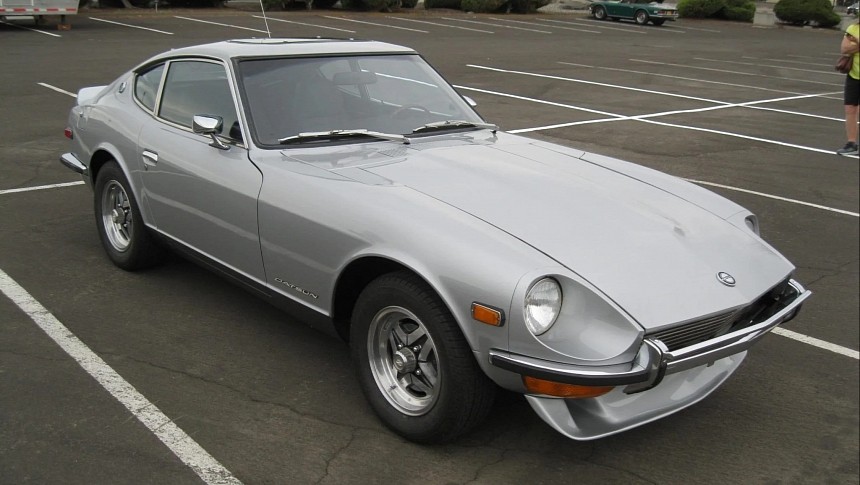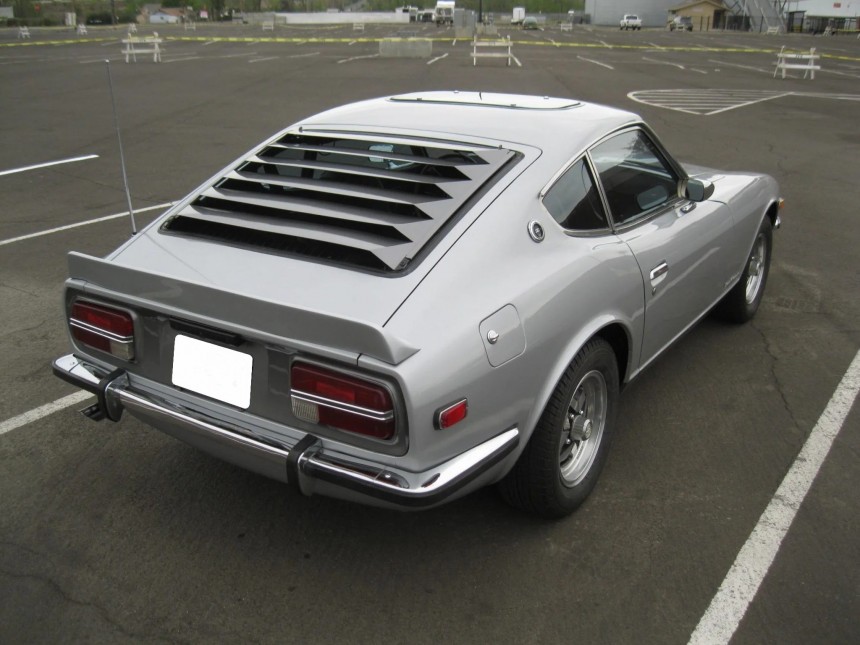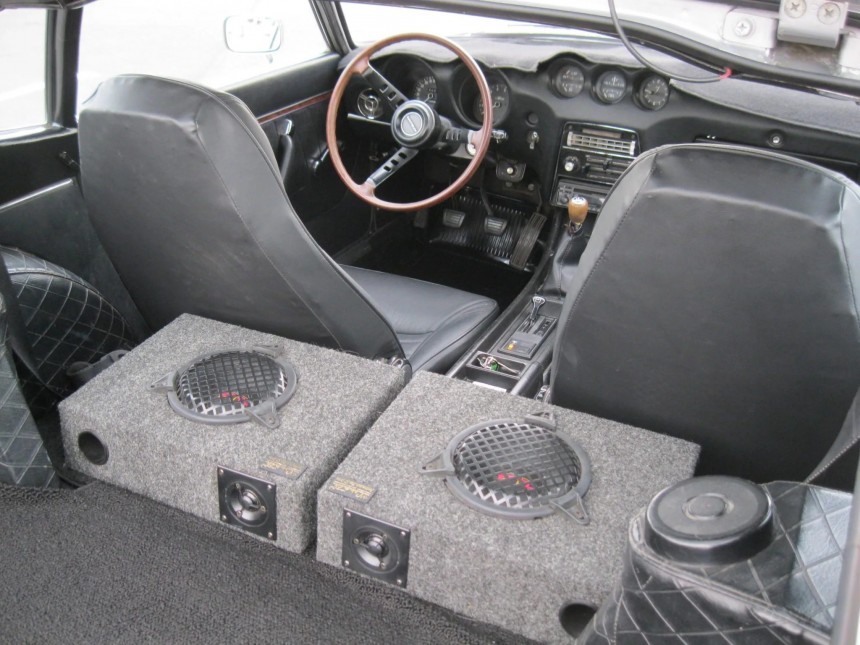Japanese car acceptance in the good ol' States of America starts with the car we discuss today. If it weren't for this car, JDM import culture, at the very least in the state we know today, wouldn't exist. We owe much of what we know and love about Japanese car culture to the Datsun 240Z, so let's dive right in.
Datsun was a company owned by Nissan since the early 1930s. From 1958 to its dissolution in 1986, Datsun was the name given to Nissan products sold overseas. The first batch of Datsuns could have been better. Their hopes and dreams for the American market stood in the Fairlady Roadster - but, let's be fair, when it comes to sports cars, post-war America would never go for something from Japan, opting for something European or British instead.
Seeing this, a Nissan executive named Yutaka Katayama, better known as Mister K, talked the Nissan big-wigs into entering the Mobilgas endurance rally in Australia. He thought the company stock would be off the charts if people saw Nissan finish a grueling course that others failed.
Nissan used the Datsun 210 for the unforgiving race and managed to snag the victory in their class, beating other automakers with way more motorsport experience. Based on this success, Mister K went to sunny Los Angeles to try and get a foothold in the US market. The big-wigs didn't expect much, but Mister K was an intelligent man and did market research about what Americans liked and wanted to buy.
That research showed that Americans liked the driver-oriented cars the Brits were getting. Still, they also wanted affordability. Here is where Shiniciro Sakurai came in, the Prince Motor Company's star engineer, a company that Nissan acquired in 1966. Using Mister Sakurai's genius for racing, Nissan birthed the Datsun 510, or the Datsun 1600, as it was called in the US and Canada.
Although the 510 was mocked for being the "poor man's BMW," it was well-received and proved to Mister K that sports cars were not the sole domain of snobby Brits and flamboyant Europeans - there was room for affordable and exciting driver-oriented Japanese cars. Thus, work began on the first Z cars, with a simple design: independent suspension and a six-cylinder layout from the aforementioned Prince Motors.
The team finished the project in 1969, and on October 22, the Datsun 240Z finally arrived - but not without any hiccups. Even though Mister K became president of Nissan Motors of the United States by 1965, he still had to fight the senior execs of Nissan in the marketing stage. The problem was that the big-wigs wanted to use the Fairlady name, not understanding that no self-respecting American would choose to buy a car with such a "girly" name - so the execs made a compromise; In Japan, Nissan would call the vehicle Fairlady, and for the rest of the world, the 240Z.
Now, back to the car. To understand what makes it so good and essential for Japanese car culture from then on, we need to take a deeper look at the car, and to aid us in doing so, we have a beautiful example today from 1971.
The car is finished in Silver and said to have been repainted in the '90s. The sleek two-door body is complemented by as-70s-as-it-gets rear window louvers, an aftermarket sunroof, and just the right amount of chrome on the bumpers and mirrors. Tying the groovy-era looks together are 14-inch wheels with Z-branded center caps. Behind them, you'll find aftermarket sway bars and front disc brakes, and rear drums.
Moving on to the interior, I'll be honest, it could be better. The bucket seats are upholstered in black leather and look decent, but that's pretty much where the good things about the interior end. The dashboard is cracked, the air conditioning needs recharging, and the odometer, which shows an optimistic 19,000 miles (30,500 kilometers), rolled over at least once.
Redeeming itself, though, you have a three-spoke wooden steering wheel that fronts a 160 mph (260 kph) speedometer, a tachometer, and a few other auxiliary gauges - it also has a shift-knob to match the classy steering wheel.
Moving on under the hood, you'll find an L24 straight-six, churning out 151 hp (153 ps) from a 2.4-liter (146 ci) displacement and dual SU carbs for all that intake noise goodness. Power is sent to the rear wheels via a four-speed manual transmission.
So, why do I and others think that the 240Z is so vital to JDM culture? Well, it has the perfect formula that we grew to love - fun to drive, reliable, and also cheap. It proved that you could have a cool, exciting car without putting up with the stigma of the highbrow Europeans and Brits.
Now, if you appreciate how important the 240Z is and if you want one for yourself, this one is up at auction in Pendleton, Oregon. It currently sits at $10,000 with six days left on the auction. The same family has owned it since new, and it comes with spare parts, partial service records, and a clean Oregon title.
Seeing this, a Nissan executive named Yutaka Katayama, better known as Mister K, talked the Nissan big-wigs into entering the Mobilgas endurance rally in Australia. He thought the company stock would be off the charts if people saw Nissan finish a grueling course that others failed.
Nissan used the Datsun 210 for the unforgiving race and managed to snag the victory in their class, beating other automakers with way more motorsport experience. Based on this success, Mister K went to sunny Los Angeles to try and get a foothold in the US market. The big-wigs didn't expect much, but Mister K was an intelligent man and did market research about what Americans liked and wanted to buy.
Although the 510 was mocked for being the "poor man's BMW," it was well-received and proved to Mister K that sports cars were not the sole domain of snobby Brits and flamboyant Europeans - there was room for affordable and exciting driver-oriented Japanese cars. Thus, work began on the first Z cars, with a simple design: independent suspension and a six-cylinder layout from the aforementioned Prince Motors.
The team finished the project in 1969, and on October 22, the Datsun 240Z finally arrived - but not without any hiccups. Even though Mister K became president of Nissan Motors of the United States by 1965, he still had to fight the senior execs of Nissan in the marketing stage. The problem was that the big-wigs wanted to use the Fairlady name, not understanding that no self-respecting American would choose to buy a car with such a "girly" name - so the execs made a compromise; In Japan, Nissan would call the vehicle Fairlady, and for the rest of the world, the 240Z.
The car is finished in Silver and said to have been repainted in the '90s. The sleek two-door body is complemented by as-70s-as-it-gets rear window louvers, an aftermarket sunroof, and just the right amount of chrome on the bumpers and mirrors. Tying the groovy-era looks together are 14-inch wheels with Z-branded center caps. Behind them, you'll find aftermarket sway bars and front disc brakes, and rear drums.
Moving on to the interior, I'll be honest, it could be better. The bucket seats are upholstered in black leather and look decent, but that's pretty much where the good things about the interior end. The dashboard is cracked, the air conditioning needs recharging, and the odometer, which shows an optimistic 19,000 miles (30,500 kilometers), rolled over at least once.
Redeeming itself, though, you have a three-spoke wooden steering wheel that fronts a 160 mph (260 kph) speedometer, a tachometer, and a few other auxiliary gauges - it also has a shift-knob to match the classy steering wheel.
So, why do I and others think that the 240Z is so vital to JDM culture? Well, it has the perfect formula that we grew to love - fun to drive, reliable, and also cheap. It proved that you could have a cool, exciting car without putting up with the stigma of the highbrow Europeans and Brits.
Now, if you appreciate how important the 240Z is and if you want one for yourself, this one is up at auction in Pendleton, Oregon. It currently sits at $10,000 with six days left on the auction. The same family has owned it since new, and it comes with spare parts, partial service records, and a clean Oregon title.















